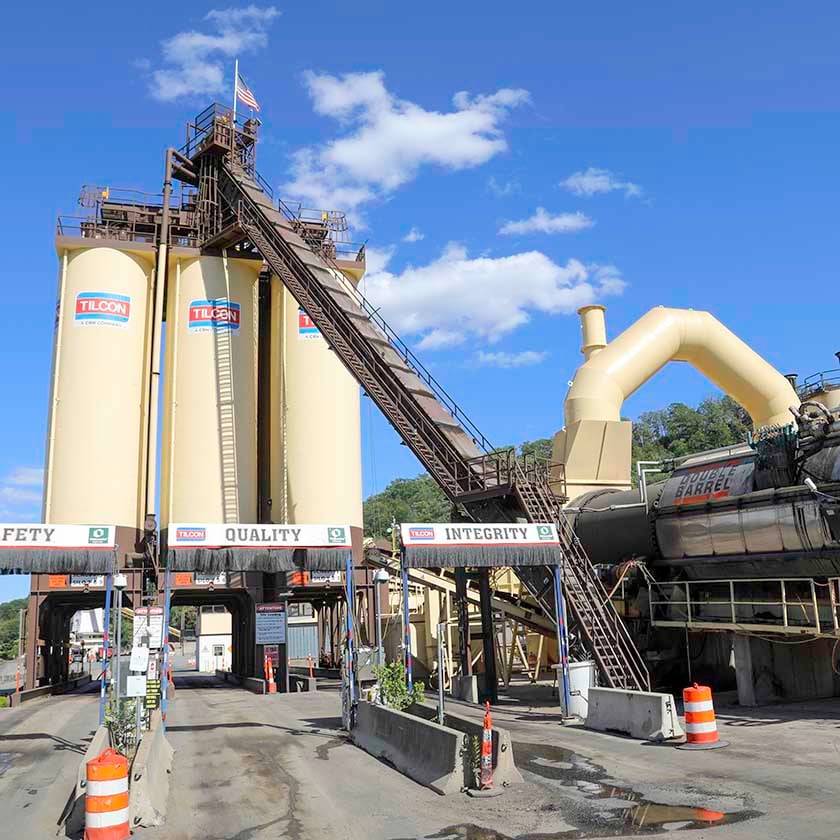Hot Mix Asphalt Paving: Your Portal to Premium Angled Parking Solutions
Hot Mix Asphalt Paving: Your Portal to Premium Angled Parking Solutions
Blog Article
Unlocking the Secrets of Warm Mix Asphalt Innovation
Exploring the depths of warm mix asphalt innovation uncovers a world where thorough procedures and precise formulations assemble to form our roadways and infrastructure. The blend of aggregates, binders, and fillers isn't just a construction task however a tactical orchestration of durability and effectiveness. As we peer right into the complex dancing of components, a tapestry of durability and sustainability unravels. What lies beneath this surface of asphaltic mastery, and what tricks wait to be revealed in the realm of leading innovations?
Significance of Hot Mix Asphalt
Hot Mix Asphalt plays an essential function in modern infrastructure development because of its toughness and cost-effectiveness. As one of the most generally used paving product for roadways, highways, and parking area, Hot Mix Asphalt provides a variety of advantages that add to its importance in building tasks. One key advantage is its capability to hold up against rush hour loads and severe climate condition, providing a durable and trustworthy surface for transportation networks. Additionally, Hot Mix Asphalt is cost-effective in both preliminary building and lasting upkeep, making it a favored choice for lots of infrastructure tasks.
The toughness of Hot Mix Asphalt comes from its make-up, which consists of aggregates, binder, and filler materials that are thoroughly chosen and blended to meet particular performance requirements. This exact mix leads to a versatile and solid sidewalk that can withstand regular usage without substantial damage. In Addition, Warm Mix Asphalt is 100% recyclable, further enhancing its sustainability and ecological advantages. Overall, the significance of Warm Mix Asphalt in infrastructure development can not be downplayed, as it remains to be a keystone of contemporary building and construction techniques.
Elements of Asphalt Mixes
The composition of asphalt blends consists of meticulously chosen aggregates, binder, and filler materials that are crucial for achieving specific efficiency requirements. Accumulations are the key element of asphalt blends, giving toughness and stability. The binder, commonly bitumen or asphalt concrete, holds the aggregates with each other and offers adaptability and durability to the mix.
The combination and proportion of these elements play a significant function in establishing the top quality and performance of the asphalt mix. Designers thoroughly design the mix to satisfy details requirements, taking into consideration factors like website traffic quantity, environment problems, and sidewalk life expectancy. Appropriate selection and harmonizing of accumulations, binder, and fillers are vital for developing sturdy, lasting asphalt pavements.
Combining and Manufacturing Methods

Once the aggregates are chosen, the binder, commonly asphalt cement, is contributed to bind the products with each other. The binder's top quality and amount dramatically influence the mix's strength, resistance, and adaptability to ecological factors. Furthermore, fillers like moisturized lime or Portland cement may be incorporated to boost specific qualities of the asphalt mix, such as its workability or dampness resistance.
During manufacturing, the aggregates and binder are warmed, usually in between 250-325 ° F(121-163 ° C ), to promote blending and make sure correct finishing of the aggregates. The mixing process needs to be complete to attain a homogeneous mixture that advertises the wanted efficiency features of the asphalt. Various strategies, such as set mixing or drum mixing, are used to accomplish premium and constant asphalt mixes for construction jobs.
Variables Affecting Asphalt Efficiency
Variables affecting asphalt efficiency include a series of variables that affect the longevity, long life, and total high quality of asphalt sidewalks. One essential variable is the top quality of products made use of in the asphalt mix. The kind and resource of aggregates, the binder quality, and the ingredients all play a considerable role in establishing the efficiency of the asphalt pavement. The rank of aggregates is crucial as it influences the mix's resistance, stability, and workability to fracturing and rutting.

Layout considerations, such as pavement density and drain, are essential in ensuring the long-lasting performance of the asphalt sidewalk. By thoroughly considering these elements, specialists and engineers can optimize asphalt efficiency and improve the solution life of pavements.
Lasting Practices in Asphalt Innovation

In addition, the advancement of warm-mix asphalt (WMA) innovations has actually gotten traction in the last few years. WMA enables for the manufacturing and placement of asphalt mixes at reduced temperatures compared to conventional hot-mix asphalt, leading to lowered power intake and greenhouse gas emissions. The use of permeable asphalt blends can help reduce stormwater drainage problems by enabling water to penetrate with the sidewalk and into the ground, promoting natural water filtration and recharge procedures. By executing these sustainable practices, the asphalt market can add to building a more resistant and environmentally friendly infrastructure network.
Conclusion
To conclude, warm mix asphalt technology plays an important function in modern-day facilities advancement as a result of its sturdiness and cost-effectiveness. By meticulously balancing parts, using correct blending methods, and considering different variables, engineers can produce top notch asphalt mixes that endure rush hour lots and rough weather. Accepting sustainable methods, such as utilizing warm-mix technologies and recycled materials, even more improves the environmental friendliness of asphalt technology.
Mixing and manufacturing methods in warm mix asphalt modern technology entail the specific mix and handling of accumulations, binder, and fillers to create a high-performance and sturdy asphalt mix.Factors influencing asphalt efficiency encompass a range of variables that affect the toughness, durability, and total quality of asphalt sidewalks. Lasting methods in asphalt modern technology include various initiatives aimed at minimizing the environmental impact of asphalt production and paving processes. By incorporating recovered asphalt sidewalk (RAP) and recycled asphalt shingles (RAS) into new asphalt mixes, the market can considerably reduce the intake of raw materials and energy, while also lowering landfill waste.
WMA permits for the manufacturing and placement of asphalt blends at reduced temperatures contrasted to typical hot-mix asphalt, resulting in lowered power usage and greenhouse gas exhausts.
Report this page